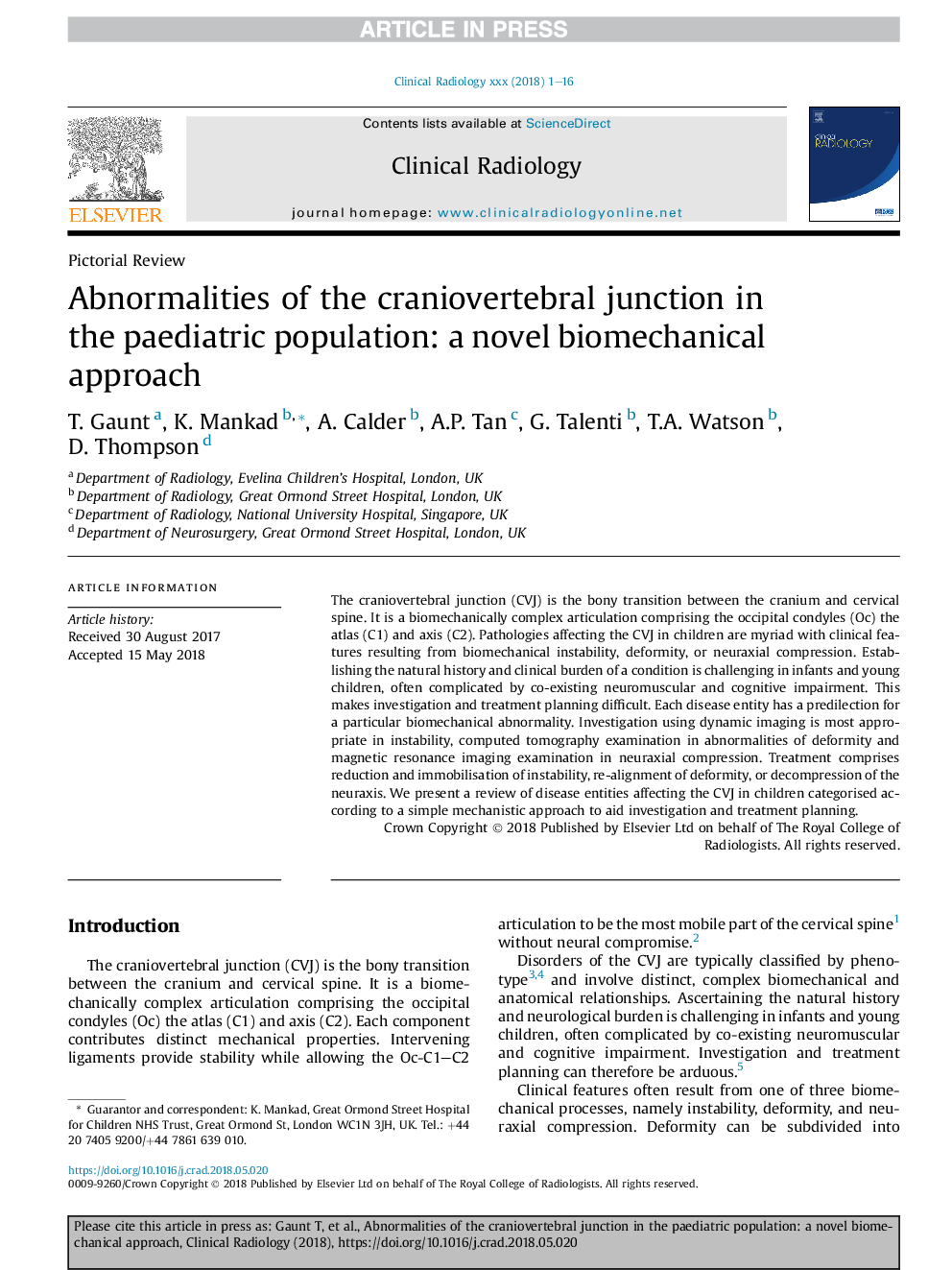| Article ID | Journal | Published Year | Pages | File Type |
|---|---|---|---|---|
| 10220305 | Clinical Radiology | 2018 | 16 Pages |
Abstract
The craniovertebral junction (CVJ) is the bony transition between the cranium and cervical spine. It is a biomechanically complex articulation comprising the occipital condyles (Oc) the atlas (C1) and axis (C2). Pathologies affecting the CVJ in children are myriad with clinical features resulting from biomechanical instability, deformity, or neuraxial compression. Establishing the natural history and clinical burden of a condition is challenging in infants and young children, often complicated by co-existing neuromuscular and cognitive impairment. This makes investigation and treatment planning difficult. Each disease entity has a predilection for a particular biomechanical abnormality. Investigation using dynamic imaging is most appropriate in instability, computed tomography examination in abnormalities of deformity and magnetic resonance imaging examination in neuraxial compression. Treatment comprises reduction and immobilisation of instability, re-alignment of deformity, or decompression of the neuraxis. We present a review of disease entities affecting the CVJ in children categorised according to a simple mechanistic approach to aid investigation and treatment planning.
Related Topics
Health Sciences
Medicine and Dentistry
Oncology
Authors
T. Gaunt, K. Mankad, A. Calder, A.P. Tan, G. Talenti, T.A. Watson, D. Thompson,
